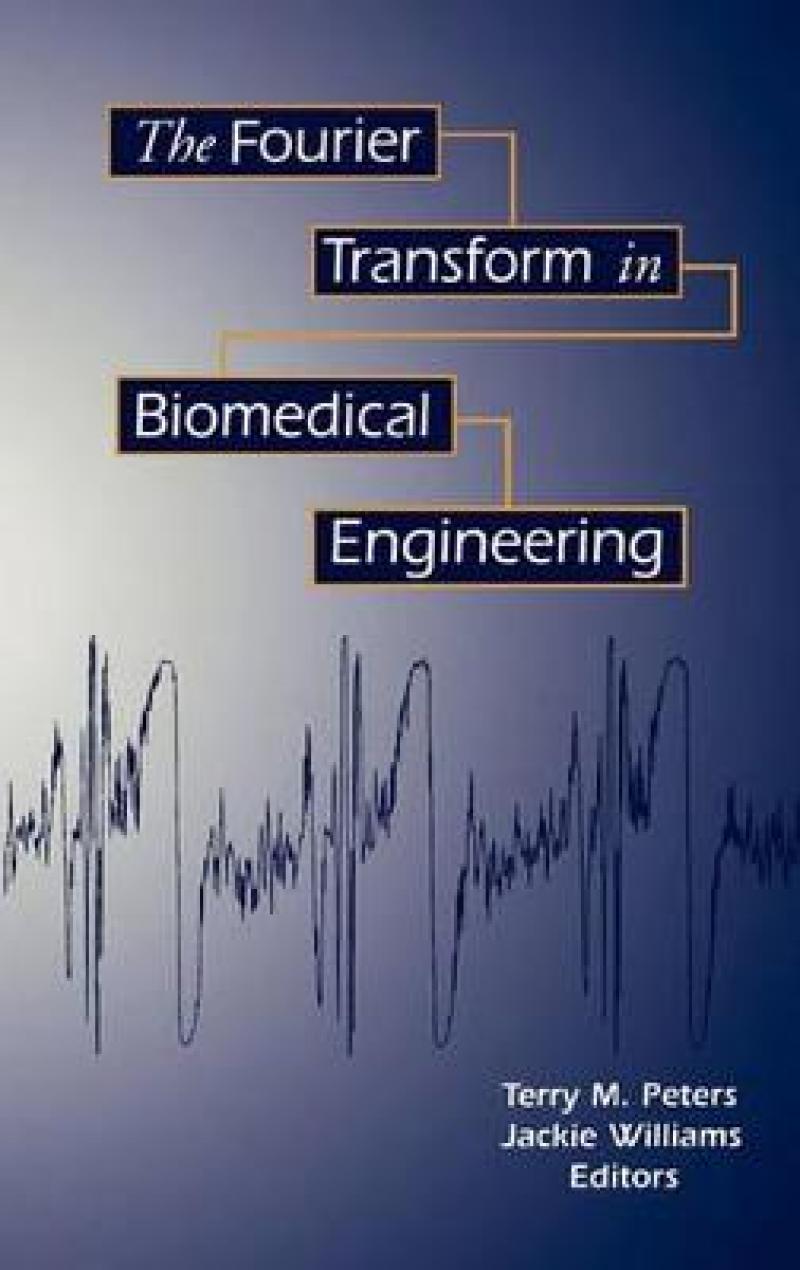In 1994, in my role as Technical Program Chair for the 17th Annual International Conference of the IEEE Engineering in Medicine and Biology Society, I solicited proposals for mini-symposia to provide delegates with accessible summaries of important issues in research areas outside their particular specializations. Terry Peters and his colleagues submitted a proposal for a symposium on Fourier Trans forms and Biomedical Engineering whose goal was "to demystify the Fourier transform and describe its practical application in biomedi cal situations". This was to be achieved by presenting the concepts in straightforward, physical terms with examples drawn for the parti cipants work in physiological signal analysis and medical imaging. The mini-symposia proved to be a great success and drew a large and appreciative audience. The only complaint being that the time allocated, 90 minutes, was not adequate to allow the participants to elaborate their ideas adequately. I understand that this feedback helped the authors to develop this book.
Les mer
In 1994, in my role as Technical Program Chair for the 17th Annual International Conference of the IEEE Engineering in Medicine and Biology Society, I solicited proposals for mini-symposia to provide delegates with accessible summaries of important issues in research areas outside their particular specializations.
Les mer
1 Introduction to the Fourier Transform.- 1.1 Introduction.- 1.2 Basic Functions.- 1.3 Sines, Cosines and Composite waves.- 1.4 Orthogonality.- 1.5 Waves in time and space.- 1.6 Complex numbers. A Mathematical Tool.- 1.7 The Fourier transform.- 1.8 Fourier transforms in the physical world: The Lens as an FT computer.- 1.9 Blurring and convolution.- 1.10 The “Point” or “Impulse” response function..- 1.11 Band-limited functions.- 1.12 Summary.- 1.13 Bibliography.- 2 The 1-D Fourier Transform.- 2.1 Introduction.- 2.2 Re-visiting the Fourier transform.- 2.3 The Sampling Theorem.- 2.4 Aliasing.- 2.5 Convolution.- 2.6 Digital Filtering.- 2.7 The Power Spectrum.- 2.8 Deconvolution.- 2.9 System Identification.- 2.10 Summary.- 2.11 Bibliography.- 3 The 2-D Fourier Transform.- 3.1 Introduction.- 3.2 Linear space-invariant systems in two dimensions.- 3.3 Ideal systems.- 3.4 A simple X-ray imaging system.- 3.5 Modulation Transfer Function (MTF).- 3.6 Image processing.- 3.7 Tomography.- 3.8 Computed Tomography.- 3.9 Summary.- 3.10 Bibliography.- 4 The Fourier Transform in Magnetic Resonance Imaging.- 4.1 Introduction.- 4.2 The 2-D Fourier transform.- 4.3 Magnetic Resonance Imaging.- 4.4 MRI.- 4.5 Magnetic Resonance Spectroscopic Imaging.- 4.6 Motion in MRI.- 4.7 Conclusion.- 4.8 Bibliography.- 5 The Wavelet Transform.- 5.1 Introduction.- 5.2 Time-Frequency analysis.- 5.3 Multiresolution Analysis.- 5.4 Applications.- 5.5 Summary.- 5.6 Bibliography.- 6 The Discrete Fourier Transform and Fast Fourier Transform.- 6.1 Introduction.- 6.2 From Continuous to Discrete.- 6.3 The Discrete Fourier Transform.- 6.4 The Fast Fourier Transform.- 6.5 Caveats to using the DFT/FFT.- 6.6 Conclusion.- 6.7 Bibliography.
Les mer
Springer Book Archives
GPSR Compliance
The European Union's (EU) General Product Safety Regulation (GPSR) is a set of rules that requires consumer products to be safe and our obligations to ensure this.
If you have any concerns about our products you can contact us on ProductSafety@springernature.com.
In case Publisher is established outside the EU, the EU authorized representative is:
Springer Nature Customer Service Center GmbH
Europaplatz 3
69115 Heidelberg, Germany
ProductSafety@springernature.com
Les mer
Produktdetaljer
ISBN
9780817639419
Publisert
1998-03-24
Utgiver
Vendor
Birkhauser Boston Inc
Høyde
235 mm
Bredde
155 mm
Aldersnivå
Research, UP, P, 05, 06
Språk
Product language
Engelsk
Format
Product format
Innbundet

